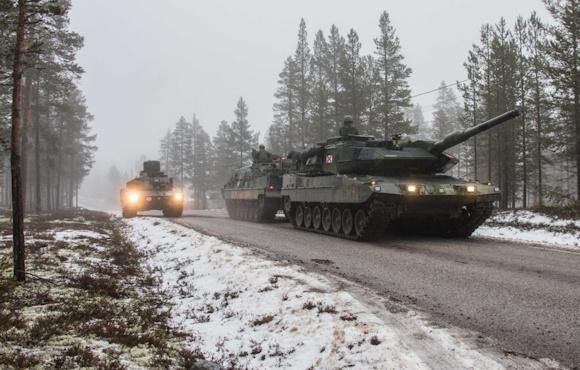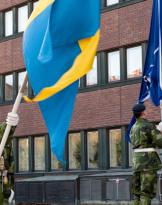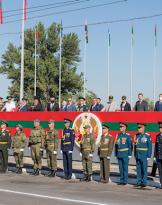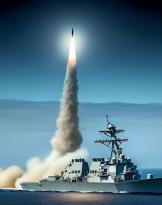After a long and demanding LIVEX phase carried out in Norway (25 Oct-23 Nov 2018) and which involved about 50.000 soldiers from all NATO countries, 250 aircraft and 65 military ships, the second part of the 'exercise Trident Juncture 18, held at the NATO JFC NAPLES Command, in Italy.
Among the certainly interesting aspects, there were the configuration, geographic area and exercise scenario itself, that is the conduct of a response-operation under NATO's "article 5", in response to an alleged invasion of a "hypothetical opponent" ( Murinus, read "Russia") in Norway.
Beyond the obvious artificiality in the construction of this simulation and the political-strategic aspects related to it, it is worth making a small consideration. Already from the 2011 the Allied Command Transformation (ACT, the NATO Command in the USA that is responsible for the study, development and consolidation of the whole training - individual and collective - of the Alliance) began to develop SKOLKAN, the scenario that actually replaced TYTAN : it was a significant and substantial geographical shift. In practice, it was considered appropriate to transfer the geographical area of interest from the NATO area of the horn of Africa and the Middle East (TYTAN) to that of north-eastern Europe (SKOLKAN), thus involving all Baltic countries. It was in the period before the Ukrainian crisis (2013). Coincidence? Maybe.
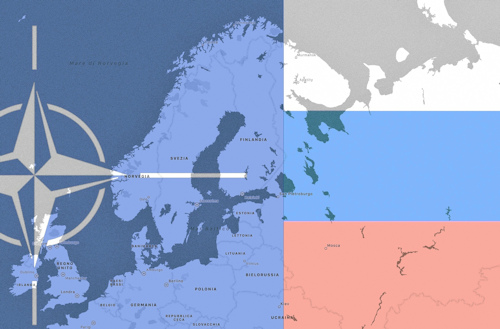 To date, the scenario remains roughly in the same area, but sees a good part of Russia incorporated.
To date, the scenario remains roughly in the same area, but sees a good part of Russia incorporated.
Is it a framework based on military and political reality, or is the threat represented by Russia exaggerated?
In order to free the occupied territories, NATO forces had to plan and deploy troops by sea, in addition to landing amphibious landings and air raids.
NATO Secretary General Jens Stoltenberg said the exercises were not directed against any specific country, but "it was important to show that we can support and defend any ally against any threat". However, the Russian Foreign Ministry described the exercises as "daring threats of war" against Moscow.
"Despite the rather clumsy attempts by the representatives of the alliance and its member states to imagine such military activity as defensive, it is obvious that this demonstration of combat capabilities has a distinct anti-Russian character", reads a note from the Kremlin.
Let's try to understand one thing: is it hypothetically possible that Russia invades Norway? As written by col. Mikhail Khodarenok, no: Let me stress that we will not analyze the military and political aspects at all, but we will focus only on the strategic, operational and technical side of things..
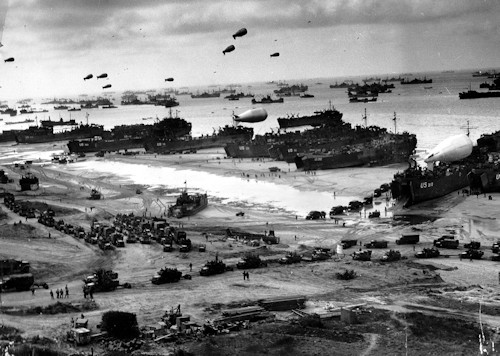 In order to conquer the central part of Norway, as described in the hypothetical scenario, the Russian armed forces should conduct a so-called combined offensive involving land, naval and air operations. Military science defines it as a type of operation in which naval, military and air forces cooperate with each other with a common strategic goal. This type of operation would use naval assets to project on the ground, on a hostile or potentially hostile designated beach, army and aviation departments. The Overlord operation, which took place in June of the 1944, is a classic example of this type of operation.
In order to conquer the central part of Norway, as described in the hypothetical scenario, the Russian armed forces should conduct a so-called combined offensive involving land, naval and air operations. Military science defines it as a type of operation in which naval, military and air forces cooperate with each other with a common strategic goal. This type of operation would use naval assets to project on the ground, on a hostile or potentially hostile designated beach, army and aviation departments. The Overlord operation, which took place in June of the 1944, is a classic example of this type of operation.
Of course, today it would be impossible to conduct such an operation in Norway, but if we consider a hypothetical situation and use the experience of the Soviet army, we will see that it will take several divisions, air brigades, amphibious forces and units with some infantry divisions. mechanized to perform a similar successful operation.
Now let's focus on the different aspects of a "combined" operation.
First of all, let's concentrate on the air operation. It usually involves an airborne division "thrown" by the parachute. If it were something minor than a division, it would not be an operation, but a tactical air assault.
The armed forces of Russia have airborne divisions. But several military transport aircraft are needed to conduct an air operation. It would be impossible without them. Russian aerospace forces do not have sufficient air capacity of this type to conduct a large-scale aerial operation. In the best case, Russia could transport a regiment, that's all. Thus, an air operation in Norway can be ruled out simply because Russia does not have enough strategic transport aircraft.
Then there is a similar problem with the potential amphibious assault, which would require at least one amphibious division. Today there are no such divisions in the Russian armed forces. The 55a Division that was stationed in the Russian Far East was dissolved.
A successful amphibious operation also requires other forces, in addition to the marines. But the Russian Northern Fleet, for example, has only five amphibious assault ships: four 775 Project landing ships and an 11711 Project landing ship ("Ivan Gren"). The most recent Landing Ship of the 775 project was manufactured in the 1985, so it has 33 years. The others are even older, since you built 40-42 years ago. The only new amphibious assault vessel is "Ivan Gren", which entered service in the 2018.
These amphibious assets can only carry a few battalions, which obviously would not be enough to conquer the Norwegian territories.
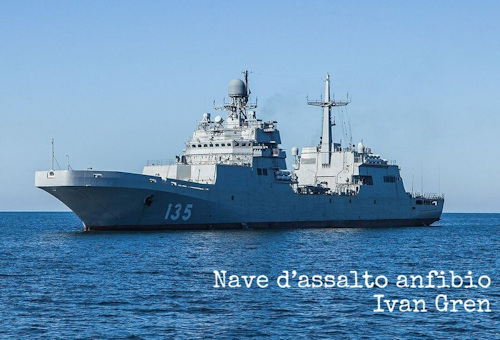 There is another important detail in this regard: the Russian marines mainly use armored amphibious armored vehicles (BTR-80) and other similar vehicles. But they all have a significant flaw: they can float well in the relatively calm waters of Sevastopol Bay or Kola Bay, for example.
There is another important detail in this regard: the Russian marines mainly use armored amphibious armored vehicles (BTR-80) and other similar vehicles. But they all have a significant flaw: they can float well in the relatively calm waters of Sevastopol Bay or Kola Bay, for example.
However, if deployed in the Norwegian Sea during an 3 level sea state, it is very likely that none of the BTRs reach the shore. It is no secret that Russian vehicles of this type lack the buoyancy and are not able to move even with low waves.
Usually, Russian amphibious assault ships arrive to the beach - the slope is 2 / 3 ° - then open the forward doors, lower the ramps, and the landing crew quickly descends to secure the bridgehead. However, it is practically impossible to do so in a real combat situation. The best way to start an amphibious assault is to have aircraft to support the ground and landing craft in specific ships for amphibious assaults.
To this end, the United States Navy has a significant number of ships in charge: amphibious assault ships for general purposes, helicopter landing pad (LHD) or amphibious transport ships (LSD). If you refer to the Russian Navy, you simply do not have any, and should not be commissioned at the moment.
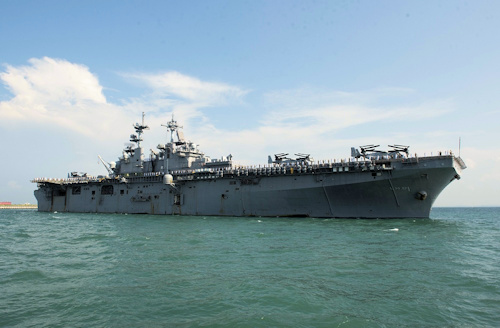 For example, there are the 775 Project Landing Ships with a displacement of just 4.400 tons and they do not even have a helicopter. Then, there's the multipurpose amphibious assault ship of the USS Wasp class (Photo) with a displacement of over 40.000 tons. Carries a full squadron of short take-off, vertical landing aircraft and helicopters. It is capable of landing a fully equipped maritime expeditionary unit of 1.900 men directly on a beach. If true, the Wasp-class ship is like a miniature aircraft carrier.
For example, there are the 775 Project Landing Ships with a displacement of just 4.400 tons and they do not even have a helicopter. Then, there's the multipurpose amphibious assault ship of the USS Wasp class (Photo) with a displacement of over 40.000 tons. Carries a full squadron of short take-off, vertical landing aircraft and helicopters. It is capable of landing a fully equipped maritime expeditionary unit of 1.900 men directly on a beach. If true, the Wasp-class ship is like a miniature aircraft carrier.
Among other things, a key condition must be met to successfully perform an air and amphibious operation. Complete air and sea superiority must be ensured in the phase prior to the start of the operation. Without this, any combined operation is bound to fail. The landing troops will be ruthlessly annihilated by the enemy before they reach the shore.
Do you think it is very easy to acquire and maintain air superiority at a distance greater than 1.000 km from the Kola Peninsula? This is simply impossible. For example, the combat radius of a SUKOY is about 1.000 km. In real terms, it means that the jet can reach the amphibious assault zone but it will have to immediately go back because of the low fuel levels. How can he participate in the airlift or patrol the area? If we take some Russian aircraft to do close air support, their combat ranges are as follows: Su-25 (photo) has between 200 km and 300 km (depending on the payload), while the Su-24 can get up to at 650 km (with a varied altitude profile).
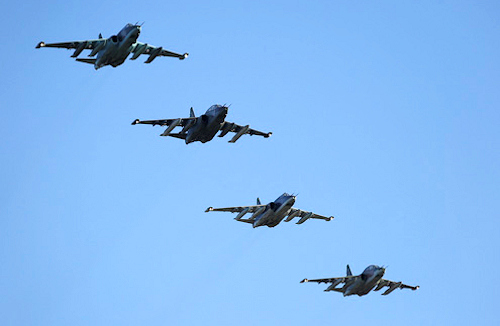 This shows that it is simply impossible to secure and maintain air superiority away from the Kola Peninsula. In addition to all this, the operational capacity of the military air bases in the Murmansk region is very limited - as is the number of airfields themselves. You can count them all on one side: Kilpyavr, Severomorsk-1, Olenya, Monchegorsk, Africanda. There is no way that these bases can accommodate any major air force to support such an assault. Also, they do not have enough infrastructure to accommodate the necessary amount of fuels and weapons, while that kind of military operation would require hundreds of thousands of tons of both.
This shows that it is simply impossible to secure and maintain air superiority away from the Kola Peninsula. In addition to all this, the operational capacity of the military air bases in the Murmansk region is very limited - as is the number of airfields themselves. You can count them all on one side: Kilpyavr, Severomorsk-1, Olenya, Monchegorsk, Africanda. There is no way that these bases can accommodate any major air force to support such an assault. Also, they do not have enough infrastructure to accommodate the necessary amount of fuels and weapons, while that kind of military operation would require hundreds of thousands of tons of both.
If it is possible to say that the Northern Fleet can obtain superiority over the sea in that assault zone, it is indeed a big question mark. The Northern Fleet has only a handful of large surface ships: two cruisers, a destroyer, a frigate, five large submarine hunters (and not all of them working). Virtually all the ships in the fleet were built at the time of the Soviet Union, and there is only one really new ship - the frigate "Admiral Gorshkov". To say that this force will be sufficient to ensure superiority in the seas against joint NATO forces in a combined operational zone would be madness. The result would not change in favor of Russia, even if other naval forces from other fleets were deployed.
 Time is another factor that can not be ignored. In the North Atlantic, time is hard to predict and can change very quickly. For example, even after all the troops were hypothetically loaded and ready, it would take another two days or more for them to be transported to the landing area. At that time window, the flat and calm sea can suddenly turn into storm of 9 degree. What would they do then? The entire Russian formation would remain at sea at the sight of the enemy. The distance between Portsmouth in England and the Normandy coast is less than 200 km, yet in the 1944, the D-Day troops had to sit down and wait two days in the British ports because the weather conditions underwent an unexpected turn.
Time is another factor that can not be ignored. In the North Atlantic, time is hard to predict and can change very quickly. For example, even after all the troops were hypothetically loaded and ready, it would take another two days or more for them to be transported to the landing area. At that time window, the flat and calm sea can suddenly turn into storm of 9 degree. What would they do then? The entire Russian formation would remain at sea at the sight of the enemy. The distance between Portsmouth in England and the Normandy coast is less than 200 km, yet in the 1944, the D-Day troops had to sit down and wait two days in the British ports because the weather conditions underwent an unexpected turn.
All in all, there are a number of conclusions that we can draw from this hypothetical scenario of operations.
NATO exaggerates much Russian military capabilities in that operational theater. Today, Moscow is not able to conduct any kind of invasion of NATO territories, not to mention air or sea - even in theory. If Russia is not capable of it, then who is that enemy whose NATO attack prepares to repel?
Russia would now need to create its naval assault forces and landing capabilities again: there is still much to be done to improve the quality and increase the amount of its army and navy. Only in this way could it become plausible for Russia to be capable of conducting an aerial and amphibious operation, at least in the near future.
Mikhail Khodarenok is a retired colonel. He graduated from the Minsk Higher Engineering School of Anti-Aircraft Missile Defense (1976) and the Command Academy of the Air Defense Forces (1986).
Commanding officer of the S-75 AA missile battalion (1980-1983).
Deputy commanding officer of a SAM regiment (1986-1988).
Senior officer at the High Command of the Air Defense Forces (1988-1992).
Officer at the main operational directorate of the General Staff of the Armed Forces (1992-2000).
Graduated from the Military Academy of the Armed Forces of the Russian Federation (1998).
Nezavisimaya Gazeta (2000-2003) and editor-in-chief of Voyenno-Promyshlennyi Kuriyer (2010-2015).
Sources:
https://www.telegraph.co.uk/news/2018/10/25/nato-holds-biggest-exercises...
https://www.gazeta.ru/army/2018/11/09/12052915.shtml
(photo: Swedish Armed Forces / MoD Russian Fed / US Navy)

